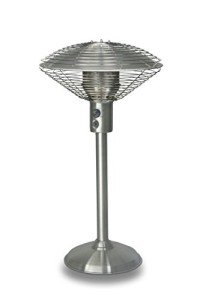Then You've Found Your Buy Gas Radiant Heaters ... Now What?
Buying Gas Radiant Heaters: A Comprehensive Guide
Gas radiant heaters have actually gained appeal recently for their performance and capability to offer instantaneous warmth. As more property owners and businesses look for ways to keep their areas comfortable, comprehending the functions, advantages, and factors to consider when acquiring these heating systems can be extremely useful. This short article explores the complexities of gas radiant heaters, helping potential purchasers in making notified choices.
What are Gas Radiant Heaters?
Gas radiant heaters are gadgets that make use of propane or natural gas to produce heat directly into a room. Instead of heating the air, they warm objects and individuals in their area, offering comfort quicker and efficiently. These heaters are popular for both indoor and outdoor settings due to their adaptability and efficiency.
Secret Features of Gas Radiant Heaters
- Direct Heating: Unlike standard heaters that warm the air, gas radiant heaters offer direct heat, making them an efficient option for quickly heating up spaces.
- Portability: Many models are readily available as portable units, enabling them to be quickly moved from one location to another.
- Fuel Variety: Gas radiant heaters can be powered by natural gas or propane, giving users versatility based upon schedule and choice.
- Adjustable Settings: Most gas radiant heaters come with adjustable heat settings, permitting users to tailor the level of warmth based upon their needs.
Advantages of Gas Radiant Heaters
- Energy Efficiency: These heaters convert gas into heat effectively, resulting in lower energy costs compared to electric heaters.
- Quick Heating: Radiant heat is felt almost instantly, making these heaters ideal for unexpected temperature drops.
- Low Maintenance: Gas radiant heaters generally require less maintenance than electric models, making them a hassle-free choice.
- Eco-friendly: When powered by clean natural gas, these heaters can be a more ecologically sustainable option compared to other heating techniques.
Types of Gas Radiant Heaters
When it pertains to selecting a gas radiant heater, it's important to comprehend the various types readily available. Below are the most typical options:
- Indoor Gas Radiant Heaters: Designed for indoor areas, these heaters are usually vented or unvented and typically come with built-in security features.
- Outdoor Gas Radiant Heaters: Commonly used in patio areas or outdoor dining areas, these heaters are developed to stand up to the components.
- Wall-Mounted Gas Radiant Heaters: A space-saving alternative, these systems are perfect for smaller spaces and can be equipped with various heat outputs depending on the location's requirements.
- Freestanding Gas Radiant Heaters: These portable designs can be utilized in numerous areas, perfect for those who require flexibility.
Purchasing Guide: How to Choose the Right Gas Radiant Heater
When acquiring a gas radiant heater, a number of factors should be considered to guarantee you select the right design for your space:
1. Heating Capacity
- Measured in BTUs (British Thermal Units), the heater's capacity identifies how much location it can efficiently warm. Buyers should evaluate their particular needs based upon room size.
Space Size (sq feet)
Recommended BTUs (for Gas Radiant Heaters)
100 – 200
5,000 – 10,000 BTUs
200 – 400
10,000 – 20,000 BTUs
400 – 600
20,000 – 30,000 BTUs
600 – 800
30,000+ BTUs
2. Type of Gas
- Consider whether you will be using propane or natural gas, as various heaters deal with different fuel types.
3. Safety Features
- Try to find designs equipped with security features such as automated shut-off valves, tip-over security, and oxygen deficiency sensors.
4. Installation Requirements
- Some heaters may need expert setup, particularly vented models. Be sure to consider the expenses and requirements connected with setup.
5. Mobility
- If versatility is essential, think about portable models that can be easily moved from one place to another.
Setup and Maintenance
Gas radiant heaters are normally uncomplicated to install, especially portable designs. Nevertheless, vented options might require professional setup to ensure they fulfill local safety codes.
Maintenance typically involves:
- Regular cleaning to avoid dust buildup.
- Inspecting gas connections and fittings for leakages.
- Guaranteeing safety features are practical.
Tip: Regular checks around the unit can help extend its life-span and maintain safety.
Often Asked Questions (FAQs)
Q1: Are gas radiant heaters safe for indoor use?A1: Yes
, as long as they are appropriately vented and geared up with required security functions, they can be safely used indoors.
**Q2: Can gas radiant heaters be utilized in enclosed spaces?A2: Unvented gas heaters can position threats in enclosed spaces due to prospective suffocation or carbon monoxide gas accumulation. Always guarantee enough ventilation. Q3: How do I know what size heater I need? Luxury Patio Heaters : The appropriate size depends upon the area you mean to heat. Describe the BTU chart
above to determine your requirements. Q4: What is the difference between propane and gas heaters?A4: The primary distinction lies in their energy source
**; propane is provided by means of tanks, while natural gas is generally piped into homes. Q5: How can I take full advantage of efficiency?A5: Ensure the heater is appropriately sized for your space, keep it frequently, and consider using it in mix
**with other heating methods for maximum convenience. Gas radiant heaters can be a terrific addition to any home or company, using energy-efficient and fast heating solutions. By comprehending the various types, features, and considerations
when buying, buyers can make informed choices that meet their heating needs. With the ideal choice, these heaters provide convenience, reliability, and an inviting environment throughout colder seasons.  ******
******